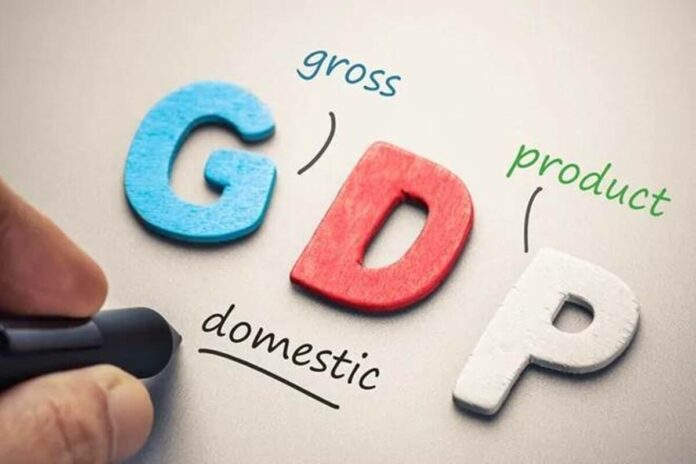According to an SBI research paper titled Ecowrap, the country’s gross domestic product (GDP) is expected to expand at 5.8% in the third quarter of fiscal 2022.
In the second quarter of 2021-22, the country’s GDP grew by 8.4%, surpassing pre-pandemic levels. However, GDP growth in the July-September period was lower than the 20.1 percent increase in the previous quarter.
The National Statistical Office (NSO) will issue GDP estimates for Q3 FY 2021- 22 on February 28.
“According to the SBI Nowcasting Model, GDP growth for Q3 FY22 is expected to be 5.8%, with a downward tendency. GDP growth for the full year (FY22) has been revised down to 8.8% from our previous estimate of 9.3% “On Friday, the report stated.
The Nowcasting Model is based on 41 high-frequency data points from the manufacturing, service, and global economic activity industries.
According to the estimate, real GDP will be roughly Rs 2.35 lakh crore higher / 1.6 percent higher than FY20’s real GDP of Rs 145.69 lakh crore.
According to the research, private consumption has remained below pre-pandemic levels, and the recovery in domestic economic activity has yet to be broad-based.
Due to the impact on contact-intensive services, high-frequency indicators show that demand declined in Q3 and will continue to do so until January 2022.
Since August 2021, rural demand indicators like two-wheeler and tractor sales have been declining.
Consumer durables and passenger vehicle sales fell in the third quarter, while domestic air traffic deteriorated as a result of the Omicron variant spread. Investment activity, on the other hand, is picking up, with merchandise exports maintaining strong, according to the report.
According to the research, the weaker growth momentum reinforces recent claims that an incipient recovery needs more accommodating policy support than previously thought.
According to the research, the government might provide rural impoverished people with livelihood loans of up to Rs 50,000.
This loan might be provided on the assumption that interest-only payments will keep the loan current, with further loan renewal contingent on good repayment history, according to the report.
“If the government were to pay a 3% interest subsidy on a Rs 50,000 crore portfolio, the cost would be merely Rs 1,500 crore in 2022-23. At current prices, these loans will also operate as a significant consumption stimulant “was stated.
According to the research, another benefit of these micro livelihood loans is that they will assist the banking sector in building a thorough database and credit history of marginal borrowers, which may then be used to develop new credit-worthy borrowing classes.
Follow and connect with us on Facebook, LinkedIn&Twitter

